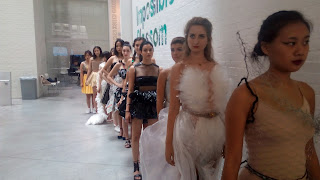AFTER weeks of hard work , we had compiled more than 10 paintings along with a garment, an object and a magazine cover.
on the last day we had an open hall exhibition with all the work we had done .
THE EXPERIENCE
I had the best time of my life and had a lot to learn from my immensely talented instructors Paul and Karen.
I worked on my existing skills and learned many new styles. the knowledge I gained in the past week is worthless and I will cherish this forever :).
on the last day we had an open hall exhibition with all the work we had done .
THE EXPERIENCE
I had the best time of my life and had a lot to learn from my immensely talented instructors Paul and Karen.
I worked on my existing skills and learned many new styles. the knowledge I gained in the past week is worthless and I will cherish this forever :).





























